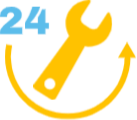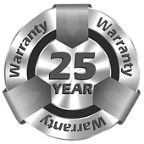Sump Pump Discharge Line Installation & Repair Toronto, GTA & Beyond
Leading Waterproofers
in Toronto

What is Sump Pump Discharge Line?

What are the Common Problems with Sump Pump Discharge Lines?
- Frozen Sump Pump Discharge Line – a common problem in colder climates like Toronto’s. Frozen discharge lines can be a significant concern. If the discharge line is not properly insulated or buried below the frost line, water in the line can freeze, leading to blockages and potentially causing the pump to malfunction or the pipe to burst.
- Clogged Sump Pump Discharge Line – sump pump discharge lines can become clogged over time. Debris such as dirt, leaves, or small rocks may enter the line, obstructing the flow of water. If not addressed promptly, clogs can lead to pump failure or water backup in the sump pit.
- Animals in Sump Pump – small animals like mice and squirrels can live in your drainage system if the sump pump discharge line outlet is not protected properly.
- Discharge Pipe Size – it’s important to ensure that the discharge pipe is adequately sized for the pump’s capacity. If the pipe is too small, it can restrict water flow and cause the pump to work harder, potentially leading to premature wear and failure.
- Water not Discharged Properly – if the sump pump discharge line outlet is located too close to the foundation of your home it can accumulate around the foundation and cause the wet basement problems to get worse. It can also cause water to accumulate on the surface around the discharge line outlet.
- Water Flowing Back to the Sump Pump – often happens due to the lack of a check valve. The valve is typically installed in the discharge line to prevent water from flowing back into the sump pit after the pump shuts off. If a check valve is missing or fails to function correctly, water can return to the sump pit, causing the pump to cycle unnecessarily and increasing the risk of pump wear.
- Corrosion & deterioration – over time, sump pump discharge lines may experience corrosion or deterioration due to the constant exposure to water, especially if the pipe material is not resistant to these effects. Corrosion can lead to leaks or pipe failure, necessitating repairs or replacement.
- Discharge line back-pitch – if the discharge line is not properly sloped away from the sump pump, water may accumulate in certain sections, leading to stagnant water, potential clogs, or even a backflow into the sump pit.
What is Included in Sump Pump Discharge System?
- Sump Pump – the sump pump itself is the primary component of the system. It is typically installed in a sump pit or basin located in the lowest part of the basement or crawl space. The pump is responsible for removing water from the pit and pumping it out through the discharge pipe.
- Discharge Pipe – the discharge pipe is a rigid or flexible pipe that connects to the sump pump and carries the water away from the sump pit. It extends vertically or horizontally depending on the installation and terminates at a suitable location outside the property.
- Check Valve – a check valve is usually installed in the discharge pipe near the sump pump. Its purpose is to prevent water from flowing back into the sump pit after the pump shuts off. The check valve ensures that water only flows in one direction, away from the sump pit.
- Discharge Line Extension – in some cases, a discharge line extension may be necessary to redirect water further away from the property. This extension can be a section of additional pipe that is connected to the existing discharge pipe and directs the water to a more suitable termination point.
- Termination Point – the termination point is the location where the discharge pipe releases the water. It should be positioned far from the house, in a way that directs the water away from the foundation of the house to prevent water from flowing back into the basement or crawl space. For example, sending it downhill away from your property.
- Bubbler Pot or Dry Well – in certain situations where a suitable termination point is not readily available, a bubbler pot or dry well may be employed. These are underground structures designed to collect and disperse water gradually into the surrounding soil to avoid water pooling or erosion.
- Backflow Prevention – depending on local regulations or specific needs, a backflow prevention device may be installed in the discharge system. This device helps prevent the reverse flow of water into the discharge pipe, which can occur during heavy rainfall or sewage backup events.

Pipe Bursting, Directional
Drilling & Horizontal Boring
Pipe Bursting
Directional Drilling & Horizontal Boring
Frequently asked questions
- We offer a variety of services related to sump pump discharge lines:
- Sump Pump Discharge line installation – above the ground and burried
- Frozen sump pump discharge line Repair
- Clean sump pump discharge line clogs
- Yard drainage system installation
The installation of a sump pump discharge line offers several benefits. Details will depend on the specifics of your property – water table level, how your particular system is designed and why. We recommend discussing your sump pump discharge drainage with experienced professional. Here is a couple of examples of the benefits a standard sump pump brings to the table:
Basement Flood Prevention – the primary purpose of a sump pump discharge line is to remove excess water from your basement or crawl space, helping prevent flooding and water damage. By redirecting water away from your home’s foundation, it keeps the area dry and reduces the risk of structural damage.
Protection Against Water Table Rise – if your property is located in an area with a high water table or experiences heavy rainfall, a sump pump discharge line becomes even more crucial. It helps control rising water levels and prevents groundwater from seeping into your basement, ensuring a dry and safe environment.
Helps Prevent Mold & Mildew – excessive moisture in basements can lead to the growth of mold and mildew, which can be hazardous to your health and cause damage to your property. By effectively draining water away, a properly installed discharge line helps reduce the humidity levels in your basement, inhibiting the growth of mold and promoting a healthier indoor environment.
Extended Sump Pump Lifespan – sump pumps are designed to remove water from the sump pit, but continuous operation can put strain on the pump and decrease its lifespan. Installing a discharge line ensures that the pump expels water efficiently and doesn’t work harder than necessary, ultimately prolonging its lifespan and reducing the need for frequent repairs or replacements.
Landscape Protection – a sump pump discharge line that is appropriately directed away from your home can prevent water accumulation around the foundation, protecting your landscape from erosion and potential damage. By channeling the water to an appropriate location such as a drainage system, storm sewer, or designated drainage area, you can safeguard your yard and prevent water-related issues.
Services by Licenced Experts in Toronto

3,000+ Happy Clients
Chose Aquamaster

Coverage

Emergency

& Insured

Price

Since 2009

South Ontario

Materials

of Mind
Don't Take Our Word for It!
Basement Waterproofing Testimonials












